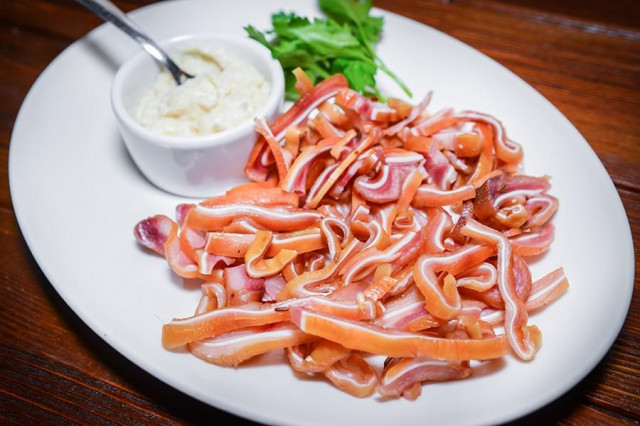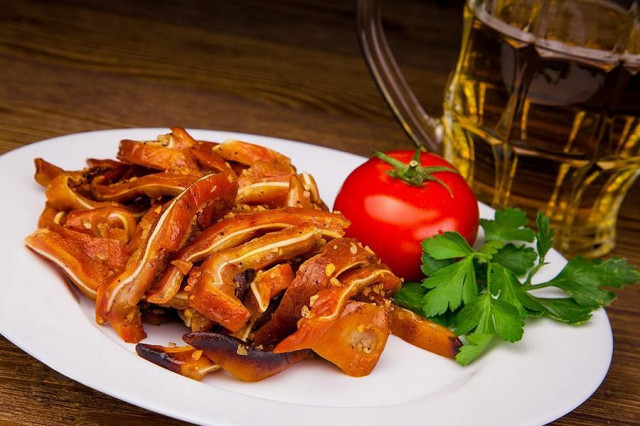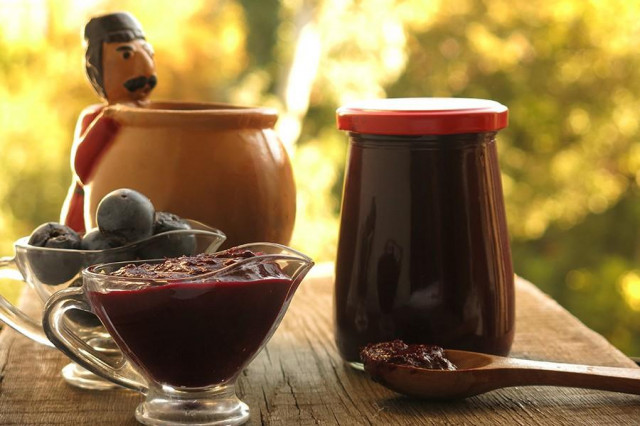Composition / ingredients
Cooking method
1. Carefully examine the ears: there should be no hairs on them. If they are still there, scorch the ears with fire, and then clean the singed parts with a knife.
2. Rinse your ears under running water with extreme care. Put the ears in a saucepan, cover with water and cook them over medium heat for about an hour or two. Ears are considered ready when
the skin will become soft and at the same time will not move away from the cartilage.
About halfway through cooking, I have it in about forty minutes after the start of cooking, season the ears with a whole peeled onion, bay leaf and possibly garlic.
While the ears are cooking, do the marinade:
1. In a deep container, mix vinegar, soy sauce, vegetable oil, coriander, salt, sugar, Korean carrot seasoning and garlic passed through a press.
2. Mix the mixture until smooth.
The marinade is ready!
When the ears are cooked, let them cool right in the broth (otherwise they will stick together), then cut them into thin strips. Put the chopped ears in a container with marinade and mix well. Leave to marinate in the refrigerator for 24 hours. After marinating, serve the ears as an appetizer or a separate dish.
Bon appetit!
When adding soy sauce to a dish, it is worth considering that it has a rather salty taste. Reduce the total amount of salt, otherwise you risk over-salting.
Instead of sugar, you can use a sweetener.
Calorie content of the products possible in the composition of the dish
- Garlic - 143 kcal/100g
- Bay leaf - 313 kcal/100g
- Soy sauce - 51 kcal/100g
- Granulated sugar - 398 kcal/100g
- Sugar - 398 kcal/100g
- Vegetable oil - 873 kcal/100g
- Salt - 0 kcal/100g
- Onion - 41 kcal/100g
- Spices dry - 240 kcal/100g
- Table vinegar - 11 kcal/100g
- Ground coriander - 25 kcal/100g
- Allspice - 263 kcal/100g
- Pig ears - 211 kcal/100g
- Ground pepper mixture - 255 kcal/100g







